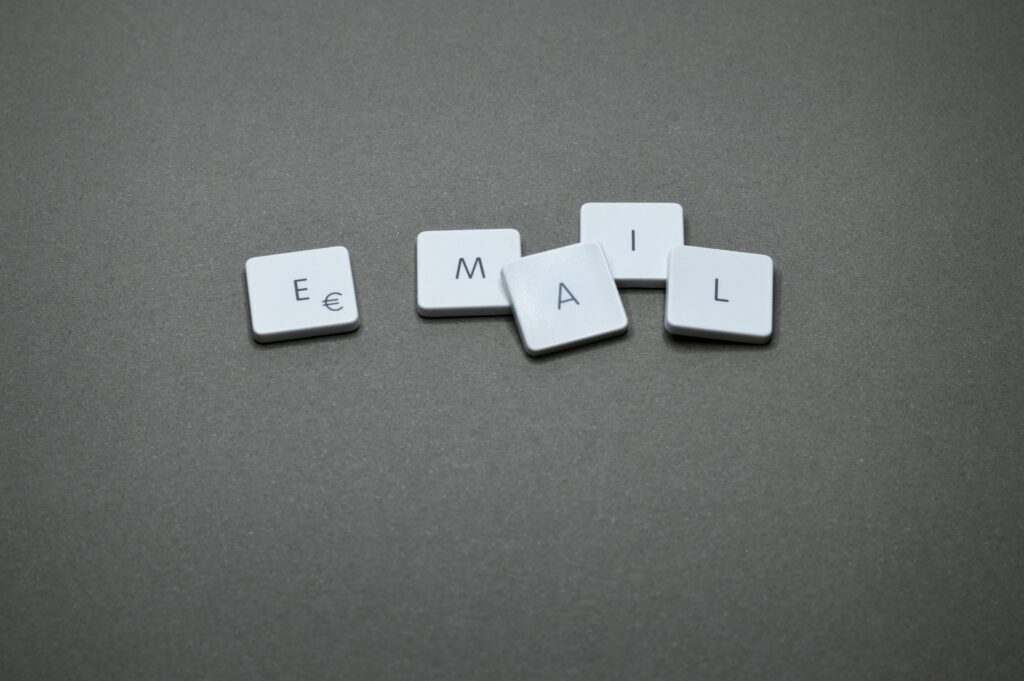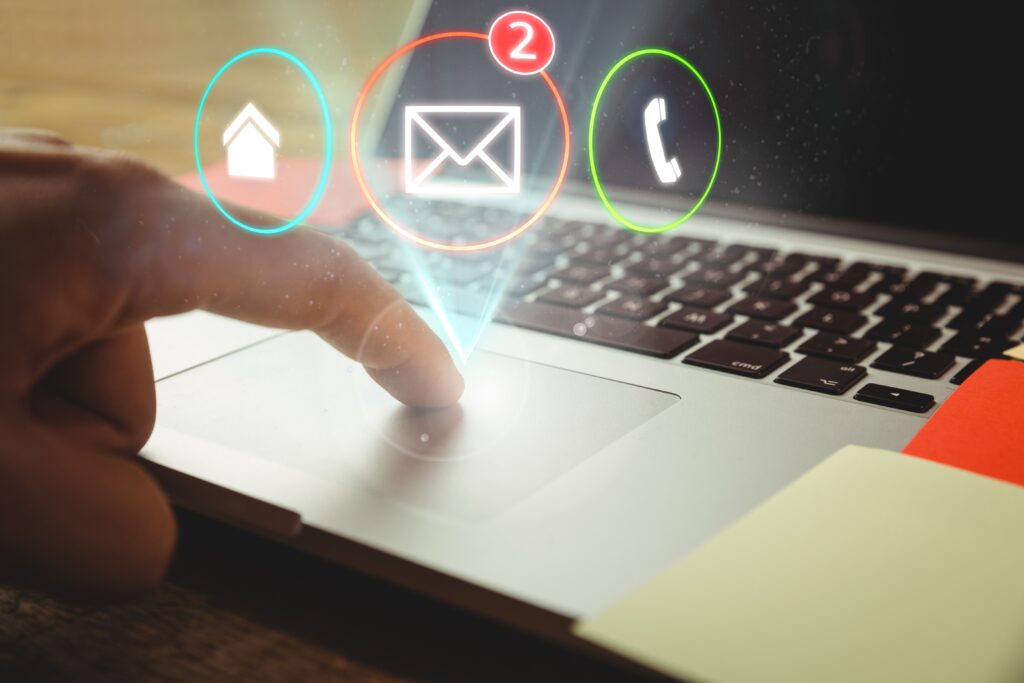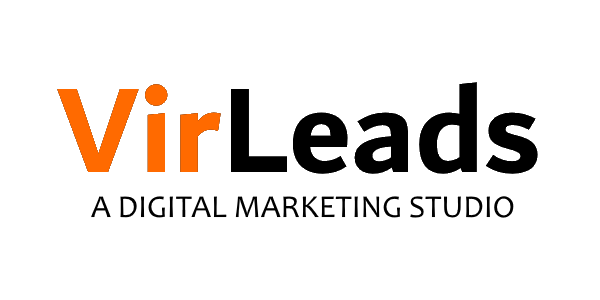"The Magic Of Segmentation In Email Marketing: Targeting Your Audience For Maximum Impact"
As a Digital Marketing professional, you most certainly understand the essentials of Email Marketing, such as how to run a campaign. However, have you ever had to pitch an Email Marketing strategy to a customer or boss? It can be difficult to persuade someone of the importance and potential rewards of such a campaign.
That is why it is critical to underline the importance of Email Marketing in assisting organizations in connecting with customers, promoting products or services, and eventually driving income. And one of the most important aspects of gaining success in Email Marketing is segmentation.
You may offer more tailored and relevant messages to your audience by segmenting your email list, leading to higher engagement and conversions. This, in turn, can assist your company in meeting its goals and objectives.
So, the next time you propose an Email Marketing campaign, don't forget to emphasize the necessity of segmentation as a key success factor.
We'll look at the value of Segmentation in Email Marketing and how it may help you reach your company goals in this blog post series. Segmentation is one of the primary tactics that I have discovered to be consistently effective. You can deliver more targeted and tailored communications to your subscribers by segmenting your email list into smaller groups depending on particular criteria. This can result in higher engagement rates, more conversions, and improved deliverability.
But why should you take my segmentation advice? So, in my opinion, Email Marketing is more than just sending mass emails to your entire list. It is all about understanding your audience, their wants, and their behavior, and then adapting your communications to fit those demands. This attitude has assisted me in developing successful Email Marketing campaigns for my clients, and I believe it may assist you as well.
In this first edition of the blog post series, we'll look at the relevance of segmentation in Email Marketing and how it can help you target specific groups while also improving open rates, click-through rates, and conversion rates. We'll also present in-depth research on the benefits of segmentation, referencing trustworthy sources such as Mailchimp's "Benefits and List Segmentation in Email Marketing" and providing real-world examples of successful segmentation techniques.
So, if you're ready to take your Email Marketing to the next level and reach your company objectives, keep reading to discover more about the power of email segmentation.
Introduction
Email Marketing is one of the most effective ways to reach your target audience and promote your brand. However, not all Email Marketing initiatives are created equal. To get the best results, you must understand how to segment your email list properly.
Segmentation is the process of splitting your email list into smaller groups depending on certain criteria such as demographics, behavior, interests, or location. By segmenting your email list, you can deliver more focused and tailored messages to your subscribers, which can result in higher open rates, click-through rates, and conversion rates.
In this first edition of this Email Marketing series, we will learn more about the necessity of Segmentation in Email Marketing and share best practices for developing effective segmentation methods. We'll also provide real-world examples of effective segmentation efforts and discuss why segmentation is important in Email Marketing.

Why Segmentation Matters in Email Marketing
The process of splitting your email list into smaller groups based on particular criteria like demographics, behavior, interests, and more is known as segmentation. You may send more focused and tailored messages to your subscribers by segmenting your list, which can result in higher engagement rates, more conversions, and increased deliverability.
One of the primary advantages of segmentation is the ability to target certain audiences with relevant material. For example, if you run a clothing e-commerce company, you may filter your list depending on gender, age, or even purchasing history. This enables you to send targeted emails highlighting products relevant to your subscribers.
According to research, tailored emails can increase open rates, click-through rates, and conversion rates. According to a Mailchimp study, segmented campaigns had a 14.32% greater open rate than non-segmented messages. They also had a 100.95% higher click-through rate than non-segmented campaigns.
Another advantage of segmentation is the ability to improve the relevance of your information. You can give information relevant to your subscribers' interests and requirements by sending them tailored communications. Subscribers are more inclined to open and engage with information that is relevant to them, which can lead to better engagement rates.
In addition to increasing engagement, segmentation can boost deliverability. You can limit the amount of unsubscribes and spam complaints by sending tailored messages to your subscribers. This can boost your sender reputation and increase the likelihood that your emails will be delivered to the inboxes of your subscribers.
Types of Segmentation tactics
You can divide your email list into smaller groups using a variety of segmentation tactics. Some of the most prevalent types of segmentation are as follows:
Demographic Segmentation
Demographic segmentation is a popular Email Marketing strategy in which marketers separate their email list depending on demographic data such as age, gender, geography, and income.
This segmentation method allows marketers to target specific age groups, genders, or geographic places, increasing the effectiveness of their Email Marketing initiatives. For example, if a marketer is pushing a product that is only available in particular countries, they can target subscribers in those countries using geographic segmentation.
Marketers can use demographic segmentation to acquire a better knowledge of their target population and tailor their Email Marketing efforts accordingly. Marketers may enhance engagement, click-through rates, and conversions by personalizing content to the individual requirements and interests of the segmented group.
Behavioral Segmentation
For email marketers trying to produce focused and effective messages, behavioral segmentation is a useful tool. Segmenting your email list based on subscriber behavior, such as purchase history, website activity, and email interaction, is part of this strategy. You can acquire useful insights into your subscribers' interests and demands by evaluating this data.
You may send your subscribers more tailored and relevant material, boosting the likelihood of engagement and conversion. If you see that a subscriber frequently clicks on links linked to a specific product or service, you can adjust your campaigns to present them with more information about that product or service. It enables you to have a deeper understanding of your subscribers and give them material that is relevant to their individual interests and requirements.
Psychographic Segmentation
By splitting your list based on personality traits, values, and interests, psychographic segmentation allows you to develop highly targeted ads. This segmentation strategy recognizes that subscribers may have varying requirements and interests, and as a marketer, you must personalize your messaging to their individual choices. Understanding your subscribers' personalities allows you to build campaigns that connect with them on a deeper level and enhance conversion rates.
If you're promoting a luxury company, for example, psychographic segmentation can be a successful strategy. You can segment your list depending on members who have expressed an interest in luxury products and services, allowing you to send information that is relevant to their beliefs and interests. Messages emphasizing exclusivity, quality, and premium features are examples of this. By using psychographic segmentation, you can create campaigns that speak directly to the desires and preferences of your target audience, increasing the likelihood of engagement and conversions.
Behavioral Segmentation
Geographic segmentation is an extremely effective strategy for segmenting your email list depending on geographical location, such as city, state, or nation. This method is especially useful for firms with a physical presence or those want to target a specific region. You may send highly targeted emails to subscribers depending on their location using geographic segmentation, which can lead to increased engagement and conversions. If you're marketing an event in a specific city, for example, you may use geographic segmentation to target subscribers who live there, making your campaign more relevant and powerful.
It's worth noting that these segmentation tactics can be combined to generate even more focused ads. You can, for example, combine demographic and behavioral segmentation to design campaigns that target subscribers who meet specific criteria, such as women aged 25 to 35 who recently made a purchase on your website.
Finally, Segmentation in Email Marketing is a valuable technique for creating more targeted and personalized Email Marketing efforts. You may personalize your campaigns to specific groups of subscribers by employing various segmentation tactics, enhancing open rates, click-through rates, and conversion rates.

Best Practices for Implementing Segmentation in Email Marketing
It is critical to follow basic best practices when using Segmentation in Email Marketing efforts. Here are a few pointers to get you started:
Data gathering and analysis
Gather as much information as possible about your subscribers and analyze it to identify patterns and trends. This will assist you in developing targeted segments based on data-driven insights. For example, if you see that a specific segment of your subscribers has a higher open rate or click-through rate, you can utilize that data to build campaigns that are more likely to resonate with that segment.
Create focused content
Create content that is focused and relevant to their interests and needs. Once your segments have been identified, create material that is focused and relevant to their interests and needs. This will aid in increasing engagement and conversion rates. If you're pushing a new line of fitness products, for example, you can develop content that resonates to subscribers who have already expressed an interest in fitness.
Test and optimize
Experiment with various segmentation strategies and messages to see what works best for your target demographic. Different topic lines, content, and calls to action can be compared using A/B testing. This will allow you to fine-tune your segmentation strategy over time and increase the overall performance of your email marketing.
Successful Segmentation Campaign Case Studies
Let's look at some successful segmentation efforts to demonstrate the value of Segmentation in Email Marketing:
Amazon: Amazon employs segmentation to offer customized product recommendations to customers based on their purchasing history and activity. This leads to increased engagement and revenue.
Airbnb: Airbnb employs segmentation to deliver hosts and guests personalized messages based on their interests and activity. Airbnb, for example, gives individualized instructions to hosts on how to improve their listings and personalized trip recommendations to guests based on their search history.
Spotify: Segmentation is used by Spotify to send customized playlists to listeners based on their listening history and preferences. This keeps consumers interested and gives them the impression that Spotify understands their musical preferences.
Sephora: Sephora employs segmentation to give subscribers individualized product recommendations and specials based on their beauty interests, purchase history, and geographic area. This has resulted in improved client engagement and loyalty at Sephora.
These examples show the value of Segmentation in Email Marketing. You can enhance engagement, conversions, and client loyalty by segmenting your list and sending customized communications. It's vital to remember that successful segmentation campaigns necessitate not just a thorough grasp of your target demographic, but also a solid Email Marketing platform capable of handling the complexities of segmenting and targeting your subscribers.
Implementation Tips and Guidance
Here are some pointers and suggestions for incorporating segmentation into your Email Marketing campaigns:
Understand your target audience: Before you begin segmenting your list, you must first understand your subscribers' needs and interests. This will allow you to build better focused campaigns that are more likely to be received positively by your subscribers.
Take advantage of data: Track subscriber activity and preferences using data from your Email Marketing platform. This can assist you in identifying trends and patterns that can be used to inform your segmentation approach.
Begin with one or two factors, such as age or geography, if you're new to segmentation. As you get experience with segmentation, you can begin to add more criteria.
Test and refine: Just like any other marketing approach, your segmentation plan should be tested and refined over time. A/B testing can be used to assess the performance of different parts and alter your strategy as needed.
Don't over-segment: While segmentation is crucial, you should avoid over-segmenting your list. Too many categories can make management tough and may dilute the impact of your marketing.
Maintain relevance of your material: Keep in mind that the purpose of Segmentation in Email Marketing is to provide subscribers with more relevant and individualized content. Make sure your content is targeted to each segment's individual interests and demands.
You can design more effective Email Marketing campaigns that engage and convert your subscribers by adopting these suggestions and advice. Remember that segmentation in Email Marketing is a strong tool that can help you achieve your marketing objectives, but it must be used properly and strategically.
And here are some other pointers for incorporating Segmentation into your Email Marketing campaigns:
Use dynamic content: Many Email Marketing platforms enable you to generate dynamic material that changes depending on the recipient's segment. For example, you may send subscribers different product recommendations based on their purchasing history.
Segment based on engagement: Dividing your list based on subscriber engagement is an excellent segmentation method. This could include subscribers who have recently opened or clicked on your emails, as well as subscribers who have not engaged with your emails in a long time. You may then customize your ads for each segment, using various messaging or incentives to drive participation.
Separate your list: Another effective segmentation method is to separate your list based on where members are in the customer lifecycle. For example, you may create segments for new subscribers who need to be onboarded, active customers who may be interested in upgrades or add-ons, and lapsed customers who need to be re-engaged.
Personalize your subject lines and content: to make your emails more relevant and engaging. This could involve referring to the recipient's previous purchases or surfing habits in the subject line or text.
Don't overlook inactive subscribers: Inactive subscribers might be a lucrative target segment. Send this segment a re-engagement campaign, provide a particular incentive, or simply ask if they still want to receive your emails.
Using these more specific tips, you can create more targeted and effective Email Marketing campaigns that will assist you in meeting your marketing objectives.
After Segmentation in Email Marketing, the next natural step in your email marketing plan is Personalization. While segmentation assists you in categorizing your audience, personalization goes a step further by tailoring your content to each individual subscriber.
In the next episode of this blog post series, we'll look at how customization can help you improve your Email Marketing efforts. We'll go through things like dynamic content, customizable subject lines, and triggered emails. We'll go over how to use data to produce individualized content that your audience will appreciate, as well as how to configure your Email Marketing platform to manage the complexities of personalization.
The use of dynamic content, which allows you to generate customized messages that alter based on the recipient's interests and behavior, is an important part of customization. This implies that each subscriber will receive a personalized message tailored to their specific requirements and interests. We'll show you how to make dynamic content and present real-world examples of successful campaigns that have used this strategy.
We'll also talk about how tailored subject lines can boost open rates and engagement. You can attract the recipient's attention and tempt them to read your email by utilizing the recipient's name or other personalized information in the subject line.
Finally, we'll look at triggered emails, which are messages that are automatically sent based on the subscriber's behavior or actions. Abandoned cart emails, welcome series, and re-engagement campaigns are examples of these. We'll go over how to build up these campaigns and discuss best practices for making them as effective as possible.
Overall, the next blog post in this series will give you with actionable advice and methods for harnessing the power of customization in your Email Marketing campaigns. You can enhance engagement, conversions, and customer loyalty by personalizing your content to each unique subscriber. Stay tuned for more tips and tricks for taking your email marketing to the next level.


